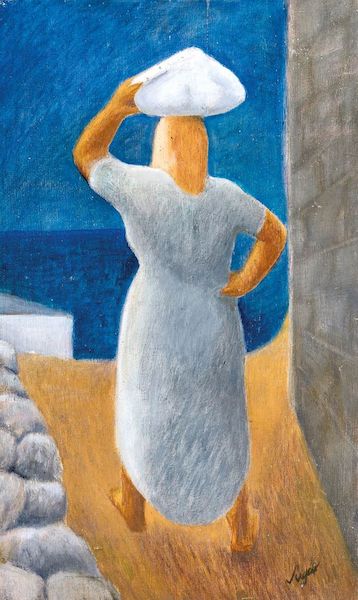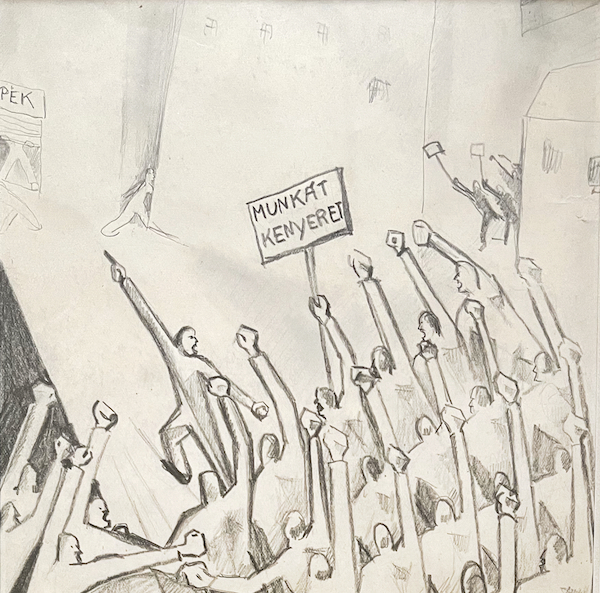Biography
Andor Sugár attended Artúr Podolini-Volkmann's free school and learned goldsmithing. He was greatly influenced by István Dési Huber, with whom he went to Italy between 1924-1927. His works, drawings and etchings on the themes of the beauty of the Mediterranean world and the workers, were created at that time. Returning home from Italy, he organized an exhibition with Dési Huber at the Mentor bookshop, and became a member of the Association of New Artists and - after coming into contact with the illegal communist party - the Group of Socialist Artists.
In 1931, he married Katalin Ágnes Kalmár, who became known as the photographer Kata Sugár. His wife committed suicide in 1943. His painting style became holistic from the mid-1930s. In 1937, he went on a study trip to southern Italy where he painted expressive, dynamic landscapes and neorealist depictions of workers. In 1937, he organized an exhibition at the Tamás Gallery with Sándor Szandai. In the summer of 1939, he worked in Hollókő. Between 1940 and 1943, he had to perform labor service several times, while he produced pictures leaning towards surrealistic abstraction. In 1943, he again exhibited with Szandai at the Tamás Gallery, and his works were included in the group exhibitions Freedom and People (1942) and New Romantics (1944). After the German occupation, he was arrested in April 1944 as a communist subversive and taken to the Sárvár labor camp. He died on the way to Auschwitz.
His paintings were exhibited for the first time in 1948, at the Free Association of Professional Artists. His memorial exhibitions were organized in 1962 at the Műcsarnok, in 1973 at the Hungarian National Gallery, and in 1979 at the Revolutionary Museum in Szombathely.


